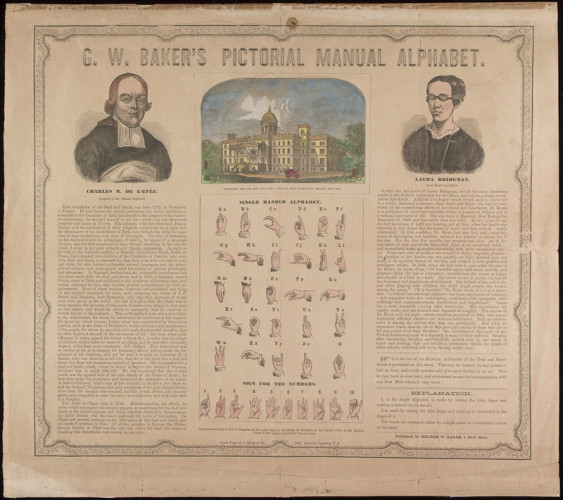
During the 1700s, Charles M. de Lepee of France sought to provide a means of communication for those who were mute or deaf by devising a series of hand gestures known as a "manual alphabet," more familiarly known today as sign language. This 1856 advertisement for the "Single Handed Alphabet," was published by George W. Baker, who was categorized as a "deaf mute." Along with illustrations showing the sign for each letter and number, the text gives a brief synopsis of Lepee's life and efforts, and of the life of Laura Bridgman, who was as well-known in the 19th century as Helen Keller's was in the 20th century.
As this advertisement describes: "It is the use of the Manual Alphabet of the Deaf and Dumb which is presented on this sheet. This may be learned by any person in half an hour, and a little practice will give great facility in its us. Thus he may have an ever ready and convenient means for communicating with any Deaf Mute whom he may meet."
Both Edmund and Carolyn Lyon worked to develop tools and provide resources for the deaf in the city of Rochester, and related manuscript collections housed in the department include the Edmund Lyon Family Papers.


